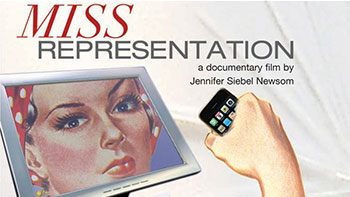Written by Imran Siddiquee at MissRepresentation.org. Follow him on Twitter @imransiddiquee
This week controversy swirled around GOP presidential hopeful Herman Cain when allegations of sexual harassment, from two unnamed women in the 1990s, surfaced in Politco. These complaints led to a financial settlement from the National Restaurant Association and the two women leaving their jobs, but further details about the incidents are sparse. Regardless of what actually happened (and it’s still unclear), it’s most important that the women involved – if they are ever publicly named – are not demonized or ostracized by the media. In so many instances like this, the women coming forward (or in this case, potentially thrust into the spotlight) get treated very unfairly by the press and online media. Their honesty and integrity is immediately questioned, and at worst, they are often vilified.
It’s absolutely necessary to encourage a work environment where all people feel supported and are comfortable speaking the truth. Companies must foster trust by instituting and enforcing policies to educate their employees about sexual harassment and support both women and men in discussing incidents.
And the media plays a significant role in this workforce dialogue. When reporters and newscasters question or attack the women who report these crimes, it impacts how future women and men will react to incidents of sexual harassment in their own workplaces. The media has an opportunity to influence change simply by sticking to the facts and avoiding sensationalized reporting. It’s not a matter of picking sides, but rather about just reporting the news.
It was the 20 year anniversary of Anita Hill’s courageous work to expose workplace sexual harassment in October, and now is a great moment for us to have this dialogue in the larger community – about how far we’ve come, and how much further we might need to go. It’s essential that we celebrate Anita’s courage as well as learn from it. Her example has the potential to inspire and empower a whole new generation of women in the working world.
This is also a moment to reiterate the need for greater diversity in leadership. We are all well aware that these kinds of incidents in politics happen more commonly amongst men than amongst women. And there might be a reason for that. A recent New York Times article highlighted research that points to a substantial gender gap in the “way women and men approach running for office.” According to the article:
“Women have different reasons for running, are more reluctant to do so and, because there are so few of them in politics, are acutely aware of the scrutiny they draw — all of which seems to lead to differences in the way they handle their jobs once elected.”
Debbie Walsh at Rutgers says it like this:
“women run for office to do something, and men run for office to be somebody…Women run because there is some public issue that they care about, some change they want to make, some issue that is a priority for them, and men tend to run for office because they see this as a career path.”
A number of studies have shown that getting more women at the tables of power improves overall business performance. And it’s likely the same thing applies to political leadership. Not to say male politicians are failing, but we’ve been picking our leadership in America from less than half of the population. And if we were to expand that pool to include more women, we might actually see some positive results. At the very least, we know we’d see some different decisions being made.
Follow Imran on Twitter: @imransiddiquee



